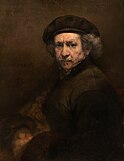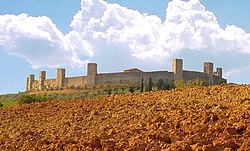Brown (color)
| Brown | ||||||||
|---|---|---|---|---|---|---|---|---|
|
||||||||
|
|
||||||||
| Hex triplet | #804000 | |||||||
| sRGBB (r, g, b) | (128, 064, 000) | |||||||
| CMYKH (c, m, y, k) | (0, 50, 100, 41) | |||||||
| HSV (h, s, v) | (30°, 100%, 59%) | |||||||
| Source | [Unsourced] | |||||||
|
B: Normalized to [0–255] (byte) H: Normalized to [0–100] (hundred) |
||||||||
Brown is a composite color. In the CMYK color model used in printing or painting, brown is made by combining red, black, and yellow, or red, yellow, and blue. In the RGB color model used to project colors onto television screens and computer monitors, brown is made by combining red and green, in specific proportions. The brown color is seen widely in nature, in wood, soil, human hair color, eye color and skin pigmentation. Brown is the color of dark wood or rich soil. According to public opinion surveys in Europe and the United States, brown is the least favorite color of the public; the color most often associated with plainness, the rustic, and poverty.
The Sahara Desert around Kufra Oasis, Libya, seen from space
Chocolate. A sachertorte in a Vienna cafe.
Espresso-roasted coffee beans.
Oak barrels in a winery in Chianti, Italy.
U.S. Navy sailors dressed in khaki at a ceremony. The word khaki means "earth" in the Persian language.
A dun-colored horse. Donn is the word for brown in the Scottish and Irish Gaelic languages.
Pieces of natural amber
A bodybuilder who has been suntanning.
Pieces of caramel.
A sepia tone photograph (1895)
...
Wikipedia






